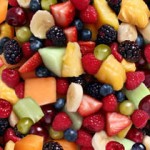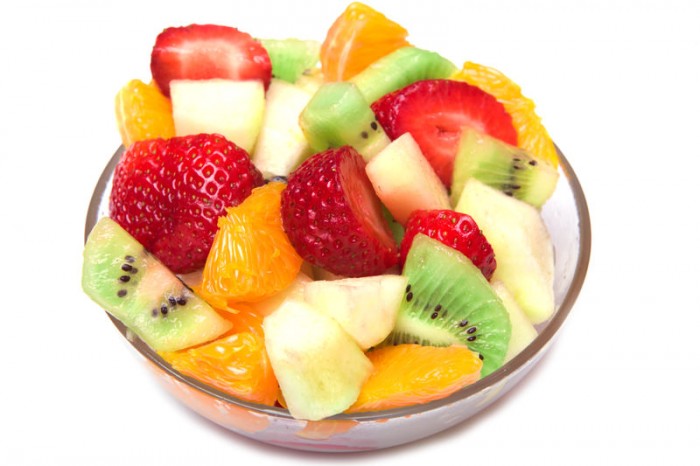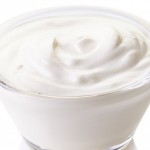Fabulously fresh flavours! For breakfast, lunch box, dessert, after-school snack, supper ... a truly any-time treat!
Try different fruit combinations, depending on what’s in season. Our top three combos: oranges, raspberries and blueberries; mango, apple and pomegranate; and pears, blackberries and sliced peach/nectarine. What will yours be?
Skills Check
Follow a recipe; follow food safety & hygiene rules; chop using the bridge/claw safely; tidy away.
Allergens
Milk
(Please note the allergens listed are indicative only. Allergens vary depending on brand; check the labels on the products you use.)
Equipment
Sharp knife, chopping board, 2 bowls, tablespoon, serving bowls
Ingredients (serves 6):
- 4 kiwi fruits
- 200g red or green seedless grapes
- 1/2 melon e.g. cantaloupe or galia
- 8 tbsp low fat natural yoghurt
- 1 pinch of ground ginger (optional)
Method
- Wash the grapes and peel the kiwi fruit and melon.
- Once peeled, chop the melon into bite-size chunks, slice the kiwi fruit and then halve them and halve the grapes.
- In a bowl mix together the fruit.
- In a separate bowl, mix together the yoghurt and ground ginger (if using).
- Share the fruit between six serving bowls and spoon the yoghurt mix on top.
So thinking about fruit salad ...

Yoghurt is an excellent source of calcium, and a good source of Vitamin D for strong teeth and bones. It is also a good source of protein.
Nutritional Information
| - | Energy | 388kJ / 92kcal | 5% |
| Low | Fat | 0.7g | 1% |
| Low | Saturates | 0.3g | 2% |
| Med | Sugars | 16.5g | 18% |
| Low | Salt | 0.2g | 3% |
per 200g serving
% of an adult's reference intake
Typical values per 100g: Energy 194kJ / 46kcal
Notes
A traffic light system is used on nutrition labels to make it easier to see which foods and drinks are lower in calories, fat, sugar and salt. Try and choose more ‘greens’ and ‘ambers’ and fewer ‘reds’, and stick to smaller portions of ‘reds’.
Just because a recipe or a food has a red traffic light doesn't mean you shouldn't eat it. Understanding why a food or recipe might have a red light can be helpful. For example oily fish is high in total fat and so any recipe containing oily fish is likely to be ‘red’ for fat. But it is recommended that we eat oily fish at least once a week because the type of fat it contains is beneficial for our health.
% Reference Intakes are also shown. Reference Intakes are guidelines about the approximate amount of particular nutrients and energy required for a healthy diet (based on an average-sized woman doing an average amount of physical activity). Most children will require less than these Reference Intakes. The contribution of one serving of a food or drink to the Reference Intake for each nutrient is expressed as a percentage.




